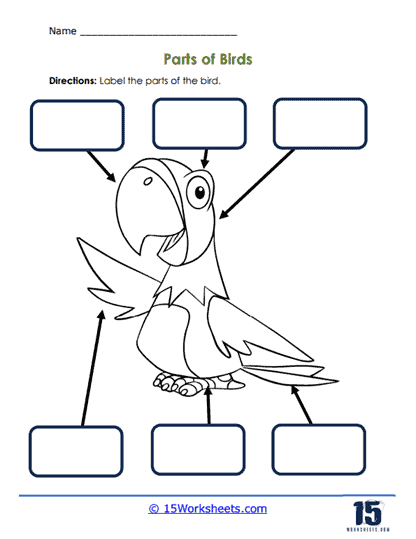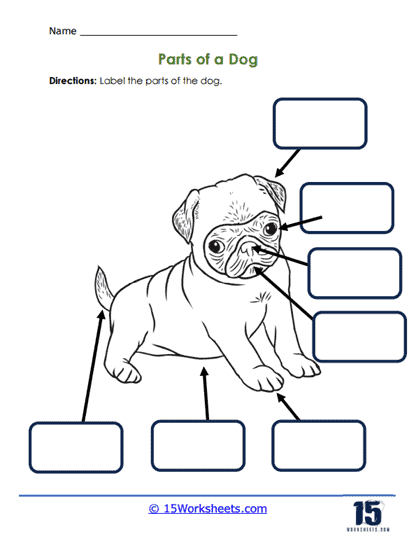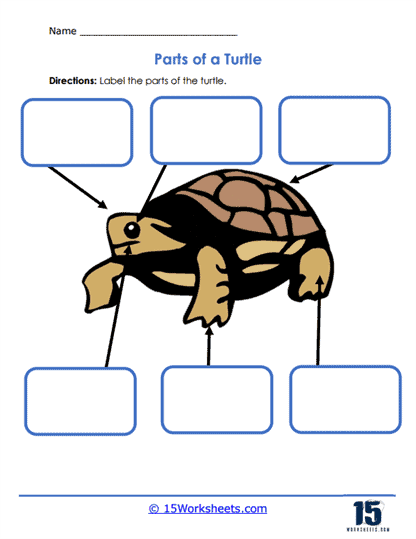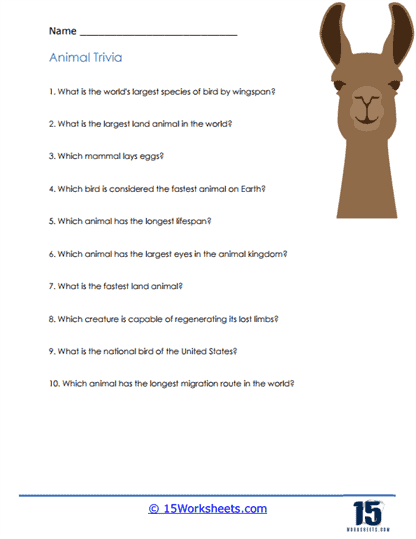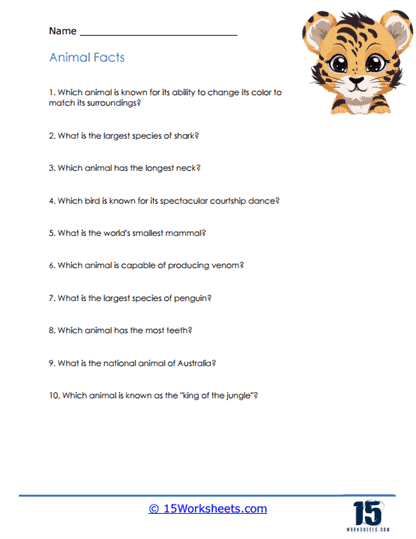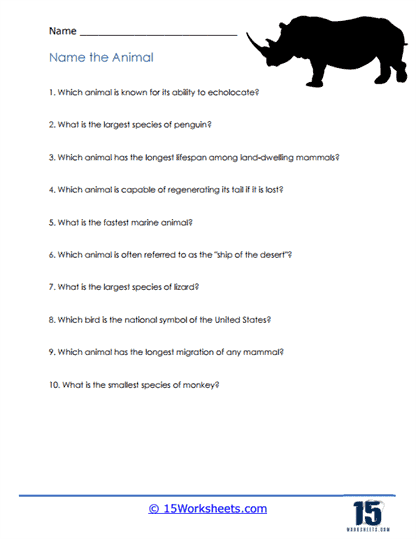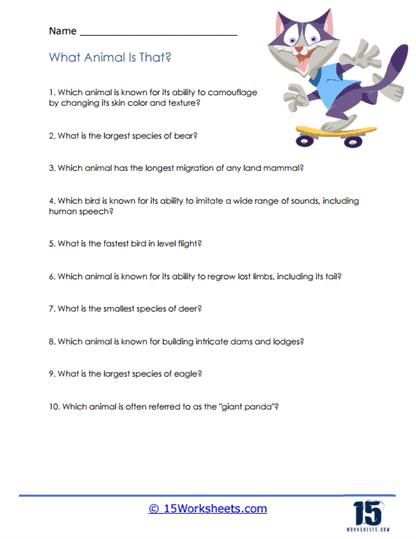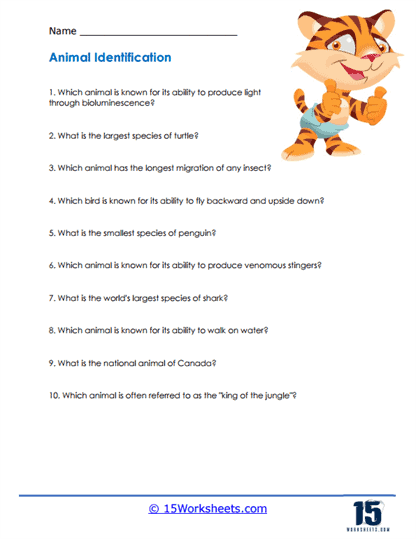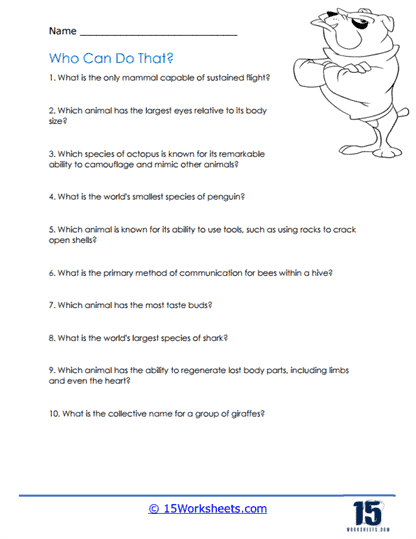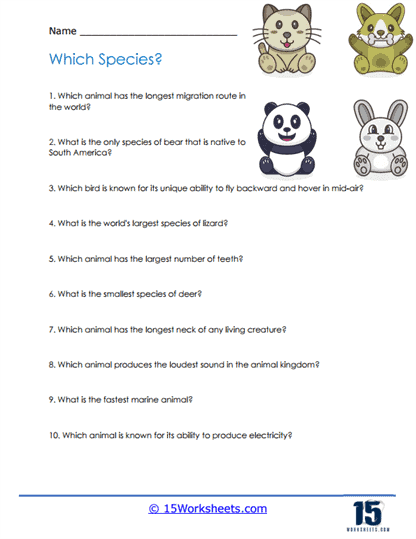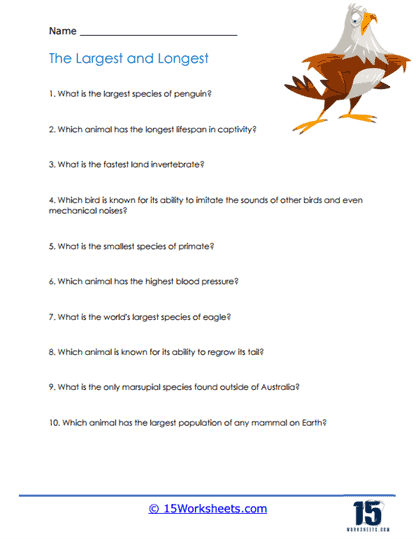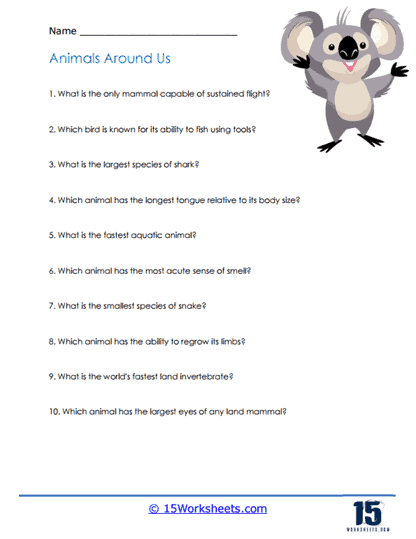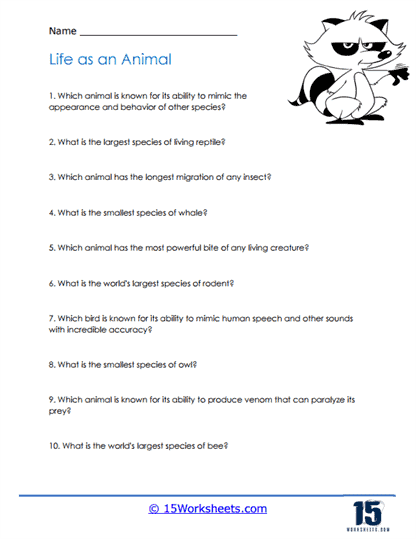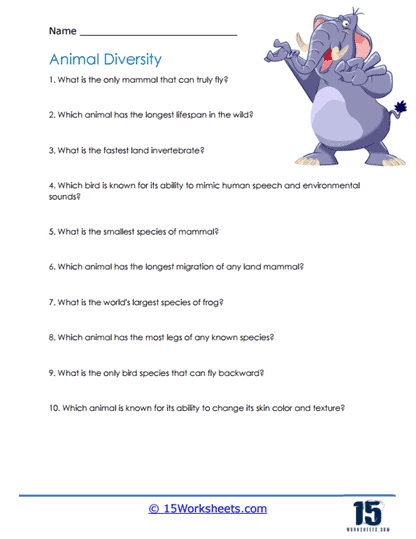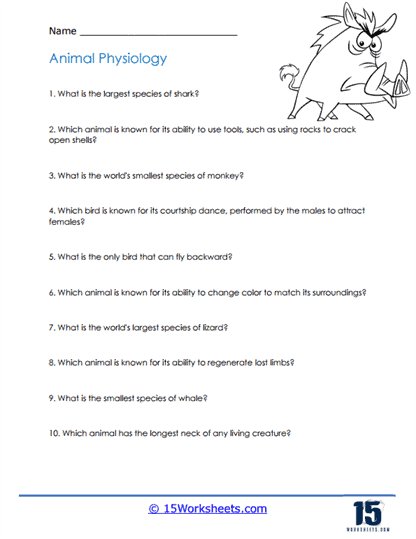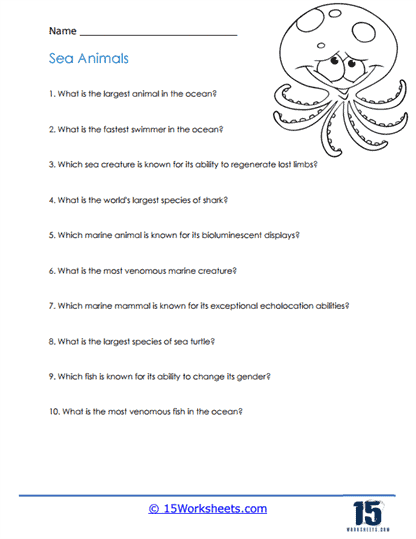Animals Worksheets
About These 15 Worksheets
Think of animal worksheets as mini-adventure books about the animal kingdom. They are pages filled with questions, puzzles, and pictures that help you explore and understand more about animals. We cover many unique aspect of animals in this section. We will continue to add new sheets based on the search that we see and also request.
Many animals boast incredible characteristics that often go unnoticed. For instance, seahorses are the only creatures where the males experience pregnancy and give birth. In contrast, the turritopsis dohrnii, a type of jellyfish, can revert to its juvenile form after reaching maturity, theoretically allowing it to live forever, earning it the nickname “immortal jellyfish.” Over in the world of birds, the albatross possesses a wingspan that’s wider than any other bird’s—up to 11 feet—and can fly thousands of miles without once flapping its wings. Not to be outdone, the axolotl, a type of salamander, never undergoes full metamorphosis, remaining in its aquatic larval form throughout its life. In Australia, the lyrebird can mimic chainsaws, camera shutters, and other bird species with astonishing accuracy, making it a master of sound replication in the animal kingdom.
Types of Problems on These Worksheets
Animal Anatomy
These worksheets might show a picture of an animal and ask students to label different parts like the tail, ears, wings, or paws. Some worksheets might compare the anatomy of different animals. This is a cool way to see similarities and differences between species. Many animals have unique body parts or structures that help them survive in their environment. It’s not just about naming parts; it’s also about understanding their purpose.
Reading Comprehension Worksheets
These worksheets combine two things – interesting stories or facts about animals and questions that test your understanding of what you’ve read. They’re designed to help students improve their reading skills while learning about the fascinating world of animals.
At the start of the worksheet, you’ll often find a short passage or story about a specific animal or group of animals. This could be a fictional tale about a lion’s adventure or factual information about how dolphins communicate. After reading the passage, there’ll be a series of questions related to what you’ve just read. These aren’t just random questions; they’re carefully designed to test how well you understood the story or information.
Researching Animals
These sheets filled with various questions, puzzles, or challenges that center around facts and interesting tidbits about animals. They’re not just about testing what you already know but also about introducing you to cool and surprising facts about creatures big and small. In many cases, they will present information that requires a bit of research.
These questions give you a few options, and you have to pick the right one. For instance – “Which animal is the largest mammal on earth? A) Elephant, B) Blue Whale, C) Giraffe.” The answer would be B) Blue Whale.
Parts of a sentence or fact will be missing, and you’ll need to complete it. For example – “A _______ is known as the king of the jungle.” The answer is “lion.”
Some worksheets might have pictures of animals, and you’ll need to identify them or answer questions about the pictured animals.
They’re a delightful way to dive deeper into the vast and fascinating world of animals, discovering things you might never have known before. Whether you’re figuring out which animal can jump the highest or learning about creatures from the deep sea, every question is a step into the wild and wonderful realm of the animal kingdom!

